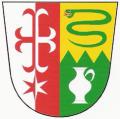The metropolis of Eastern Bohemia lies on the outskirts
the Polabian lowlands at the confluence of the Elbe with
Eagle. Altitude of the highest
places - poppies 70.5 m high
The White Tower on the Great Square is 317, 36
m.n.m. and the lowest place in the city -
the outlet of the watercourse to the Elbe is 225, 03
m.n.m.
On more than a hundred square kilometers
100,000 inhabitants live here. Residence
trade, banking and administrative
regional and national institutions
importance. Center of education and culture.
Historically one of the most significant
medieval cities in Bohemia. In
14th century dowry and residential town
of the Czech queens Eliška Rejčka and Eliška
Pomeranian. City center with many
through picturesque streets, towers, staircases,
squares and the remains of its fortifications
monument reservation. Gothic cathedral
St. Spirit (14th century). Renaissance White
tower (16th century) with the second largest
bell in Bohemia by Augustine. Baroque
chapel of St. Kliment, Jesuit college,
episcopal residence (turn
17th-18th centuries). Renaissance, Baroque and
classicist houses on medieval ones
Gothic plots.
Newer parts of the city in the first half of the 20th century
regulated and projected by significant
architects (J. Gočár, J. Kotěra, O. Liska).
The most important mayor of the city
JUDr. F. Ulrich. Especially theirs
credit goes to the city of Hradec Králové in
In the 1930s, it was called the salon of the republic.
A number of well-maintained parks, picturesque
waterfront promenades.
Museum of Eastern Bohemia, Gallery
of modern art, Klicper's theatre,
Drak Theatre, Observatory and Planetarium
and many other cultural, accommodation
and catering facilities. Several
sports areas. Ideal for
cycling trips in mostly flat
area. Golf, horse riding. Adjacent
extensive forests and many bodies of water.
The starting point for trips to the Giant Mountains
and Eagle Mountains.








